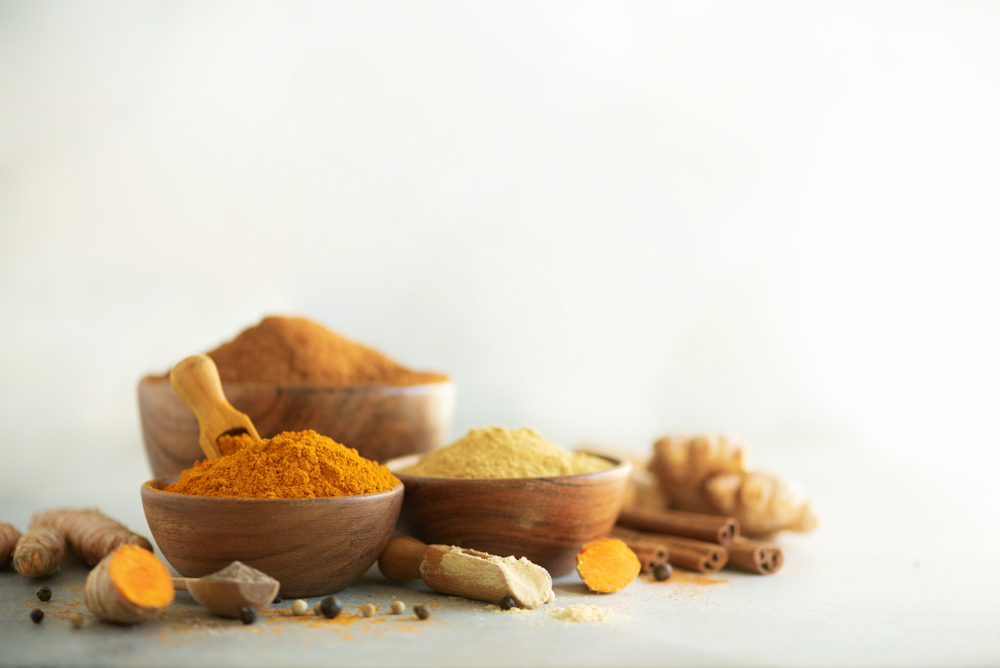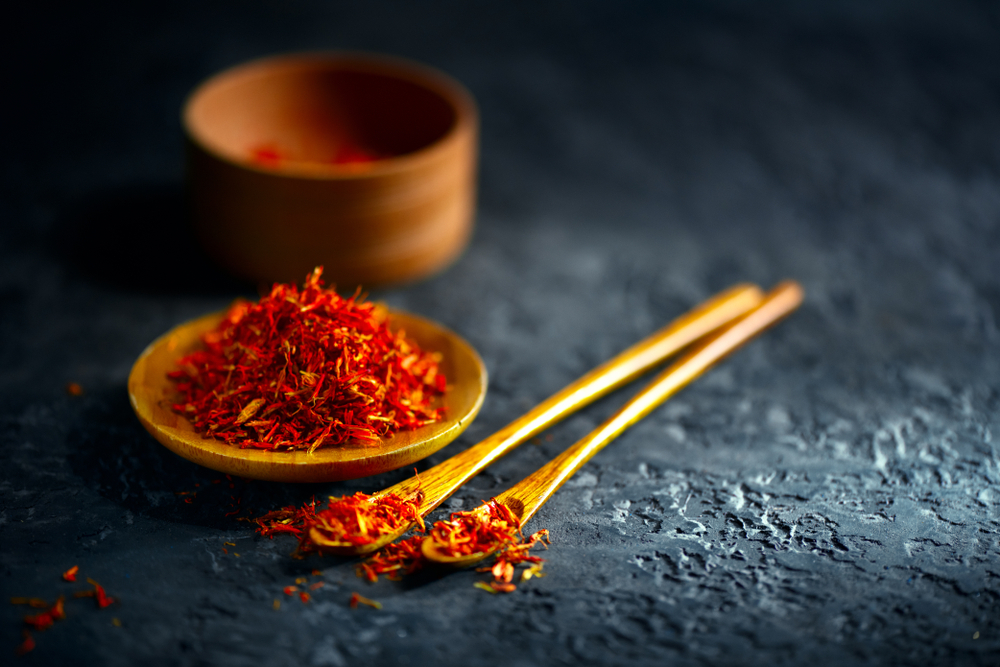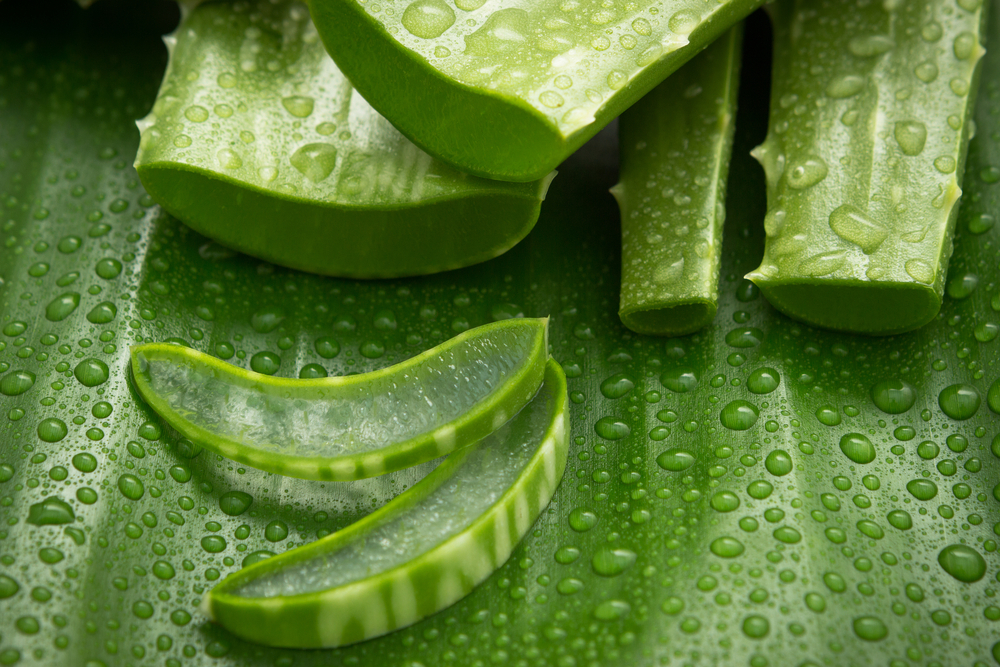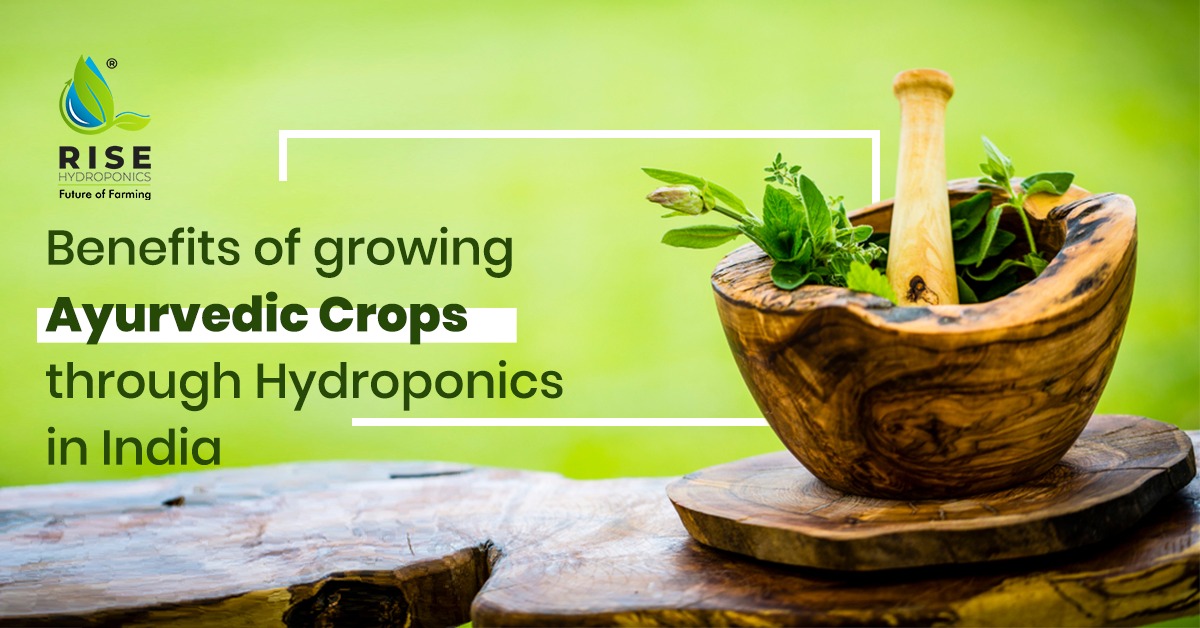Ayurvedic herbs have multiple health benefits and they are time-tested. Spices and herbs like sandalwood, turmeric (haldi), basil (tulsi), aloe (ghritkumari), and black pepper (kali mirch) are used to treat boils and sores.
Would you believe that they are at par with allopathic medicines in curing autoimmune diseases and cancer? Well, not many of us are aware, but ayurvedic crops are nutritive and self-contained in nature. They are harmless and non-toxic.
They have special healing powers and induce no side effects at all. If you want to rejuvenate the entire system instead of just healing one body part, you need ayurvedic herbs in your life.
But, did you know that you can grow them hydroponically? People worldwide are growing medicinal plants on a commercial scale with the help of hydroponics farming at home. Read on to know everything about that.

Ayurvedic/medical plants that can be grown hydroponically
Have you ever spent time with herbs and plants to understand their nature? Ayurvedic herbs and plants have specific qualities. They have the power to treat different kinds of diseases and ailments. Ginger (adrak), elaichi (cardamom), pepper, tulsi, turmeric, and pepper are used for multiple home remedies.
These ayurvedic herbal plants hold a strong ground not only because they do not pose any side effects but also because they are synchronized with nature. If we choose between synthetic medicines and chemicals, we will choose ayurvedic herbs over any drug.
Today with the help of soilless farming in India, you can grow flavorful spices and various other expensive and exotic herbs. We recommend creating a tropical oasis to grow spices like chili, curry leaf (curry patta), turmeric, lime leaf, lemongrass, cardamom, and ginger.
The long term-plants

With the help of hydroponics equipment suppliers in India, you can grow longer-term plants. These plants are the ones that produce rhizomes. Kaffir lime, turmeric, galangal, and ginger use shallow or deep media beds. Saffron, on the other hand, uses free-draining beds.
Did you know? Most exotic plants and spices can be hydroponically grown in subtropical and tropical climates. They are not fussy about the length of the day, but they do prefer heat. Most species of ginger, cardamom, curry leaf, chilies, and turmeric desire warmth throughout the year.
Spices
If you wish to grow lemongrass, sliced galangal, fresh adrak, and kaffir lime leaves, then you can grow them in a small space. But, you have to keep them compact and trimmed. For those who love their spicy curries laden with chilies, turmeric, and curry leaves, we have good news for you. Yes, you can grow them in containers too, but you need a bit more space than your average herb garden.
The rhizome family

There is nothing easier than ginger when you consider hydroponics farming at home. All you have to do is buy healthy, fresh rhizomes from the store and sow them into a damp hydroponics medium. Use the best quality hydroponics nutrients like coconut fiber at 77-86 degrees Fahrenheit.
The knobbly buds will grow into new shoots from the rhizome within no time. To get your first harvest of the large rhizomes, you only have to wait for 12-18 months.
Add more growing media to the plant’s base to increase the harvested product’s quality and yield. You can apply hydroponics nutrients solutions at an EC of 2.2-2.6 but using a bloom or fruiting formulation.
You can grow turmeric hydroponically in a similar manner to ginger as well.
Brahmi
Scientifically called Bacopa Monnieri, this traditional ayurvedic medicine helps to treat inflammatory ailments and enhance memory.
A computer applications postgraduate used hydroponics setup to grow this plant. He obtained impressive results. According to him, the venture turned out to be a successful one because instead of polyhouse farming, he used a greenhouse.
After his successful stint with Brahmi, he started growing everything – from coriander to garlic and onions.
Saffron
Most of you have used this delicate, expensive spice that adds both a distinctive color and flavor to many of your dishes. It is commercially grown as an outdoor crop where cheap labor and suitable climate are available. That is because processing and harvesting the flowers is quite challenging.
Today, you can grow saffron, a small-scale, easy hydroponics crop by buying readily obtainable saffron bulbs. The crocus of saffron grows from a corm (rounded bulb), which after vegetative growth and flowering, multiplies by producing multiple daughter corms.

Store these corms in a planted out, dry place when your hydroponics setup is ready. Keep 4-5 inches of spacing and 1.5-2 inches deep in a tray of sterile, free-draining growing media like perlite mixed with coconut fiber.
Use a hydroponics grow room to maintain moisture and temperature conditions for flowering. An indoor grow room will also keep weeds, wind, rain, and moisture at bay.
Aloe Vera
Aloe vera is used to treat scrapes and cuts besides other small injuries on the skin. When you want to grow it hydroponically, you have to use ammonia and nitrate forms in the nutrient solutions. A balance between nitrate and ammonium will favor the growth of the plant.

Growing Requirements
If you wish to have an effective but simple hydroponics garden that grows Ayurvedic crops, follow this step-by-step guide.
Seed mix:
Get a seed mix that comprises macronutrients, micro, cotton, coco peat, and coconut coir. This mix will also have compost in trace amounts to nourish the plants’ growth. Water it continuously so that it does not dry. Once the plants reach the desired height, transfer them to a hydroponics system.
Hydroponic setup:
Get hold of a rectangular tank with two holes. These two holes will have the nutrient solution and water respectively. You have to suspend the plants from the top baskets. The baskets will have to have large pores so that the roots of the plants reach the solution.
Connect the holes with an air pump for aeration. With the help of the supporting medium and external aeration, your plants will get nutrients.
Growth media:
Growth media is the inert media that will not provide nutrients to your plant but will help the plant roots grow. Gravel, scoria, sand, crushed granite, expanded clay, LECA, vermiculite, perlite, and rockwool are some growth media.
- This growth media will increase drainage and aeration
- It will prevent infestations of roots
- It will retain adequate water and oxygen
Support and shelter:
The shelter for your hydroponics system will depend on the cultivation type you will carry out. You will require a large area if you want commercial production. Make supporting arrangements based on the plant type you want to grow and one that helps in increased yield.
Temperature and humidity:
High temperatures accelerate the growth of plants, which further increases the plant’s water needs. Ideally, turmeric and ginger prefer 70-90 percent humidity in air. If you grow them in densely planted, large clumps, you can create a microclimate for them in the form of humidity. We recommend getting a damp growth medium.
Nutrients
If you are growing turmeric and ginger, then you need nutrient solutions at an EC of 2.2-2.6. Maintain the pH levels around 5.7-5.8 to maximize the uptake of nutrients.
Pro tip: When you switch bloom formulation and fruiting at higher EC, it will intensify the aroma and flavor profile of rhizomes.
Wrapping up
Did this blog encourage you to freshly harvest ayurvedic herbs in your hydroponics garden? Why not? After all, freshly produced crops will pack a powerful punch with their bioactive compounds and flavor. Besides, all of these crops will be super attractive and fun to grow. So let us all shake a few things up this year and give hydroponics farming a try!


https://jaredhueo41863.total-blog.com/descubre-cГіmo-usar-el-cГіdigo-promocional-1xbet-para-apostar-free-of-charge-en-argentina-mГ©xico-chile-y-mГЎs-60636216